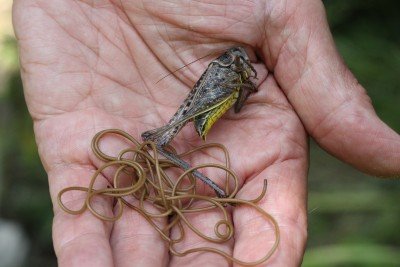
Picture this: You’re enjoying a beautiful day outside when you notice a strange little creature that has made a home in the skin of an animal. The wolf worm is unique because it depends on living hosts to grow, leading researchers to face an ethical dilemma. How can we learn about this intriguing insect without causing distress to the creature it calls home? Today, we’ll dive into the methods researchers are exploring to study these curious critters while keeping their hosts safe and sound.
Understanding Wolf Worms
Wolf worms are the larvae of the botfly, a type of fly found predominantly in North America, Central America, and South America. Their life cycle is pretty fascinating. The adult female botfly lays eggs on a host, often on mammals like rodents or even pets. Once the eggs hatch, the larvae burrow into the host’s skin, creating a well-known condition called myiasis. That’s a fancy word for when larvae live in the body of a host. It might sound a bit gruesome, but this relationship is part of nature’s intricate web.
You might be wondering why anyone would want to study wolf worms in the first place! Well, understanding their biology can give researchers insights into the ecosystems they inhabit. It could also help with animal health—think of it as uncovering nature’s secrets to better understand how to protect both wild animals and domestic pets.
The Ethical Dilemma of Studying Hosts
Here’s the thing: scientists are often torn between their quest for knowledge and the well-being of living creatures. Many people argue that we should refrain from causing harm to animals merely for research’s sake. This ethical dilemma is amplified when it comes to studying species like wolf worms, where any invasive method could harm the animal they inhabit.
Researchers are starting to look for alternatives to traditional research methods that might involve dissection or direct observation of the larvae in their hosts. The goal? Find ways to study wolf worms without negatively impacting the health of their hosts. It’s a tricky balance and requires creativity and innovation.
Non-Invasive Research Techniques
Luckily, science has come a long way in finding non-invasive ways to study creatures like wolf worms. Here are some techniques researchers are exploring:
- Observational studies: Scientists can observe animals in their natural habitat, noting changes in behavior or health without intervening directly.
- Photography and imaging: Advanced imaging technologies like infrared photography can capture the presence of wolf worms under the skin without any physical harm to the host.
- Genetic studies: By collecting environmental samples or using feces, researchers can gather DNA without needing to physically interact with the host animal.
These approaches allow researchers to gather important data while minimizing risks to the animals they study. Isn’t it amazing how technology can help us respect nature while still learning from it?
Potential Benefits of Ethical Studies
Why does it matter to study wolf worms without harming their hosts? First off, ethical research practices foster better relationships between scientists and wildlife. This approach promotes a greater respect for animal welfare and could enhance public support for biological research.
Moreover, non-invasive research could lead to a better understanding of wildlife diseases, which can inform conservation efforts and veterinary practices. Studying the interactions between wolf worms and their hosts might even unlock secrets about the ecosystems where they thrive, giving us insights into biodiversity and habitat health.
Real-World Examples of Ethical Research
Take a look at how some researchers have successfully implemented these non-invasive techniques. For instance, in a study on wolf worms, scientists set up a remote camera system to monitor wildlife interactions without disturbing any animals. They gathered valuable data about wolf worm infestations and patterns of behavior, all while leaving their subjects unharmed.
Another fascinating example involves using drones equipped with thermal imaging to locate animals affected by wolf worms. This tech allows scientists to track populations and even determine which animals might need help, all without needing to intervene directly.
The Future of Studying Wolf Worms
As technology continues to advance, the potential for non-invasive research in studying wolf worms only grows. Innovations in genetics and imaging will likely yield new methods that allow scientists to glean insights while ensuring the well-being of their hosts. This could pave the way for research that’s not only ethical but also incredibly effective.
As the scientific community embraces these approaches, we might find that there’s a lot more to learn about wolf worms and their role in ecosystems than we initially thought. The future is indeed bright, and the balance between research and compassion is becoming ever more attainable.
Wrapping It Up
To sum it all up, studying wolf worms without harming their hosts is not just a noble goal but an achievable one. With ethical practices and innovative technology, researchers can explore these intriguing creatures while respecting the animals involved. It’s a win-win for both science and nature.
So, the next time you think about the hidden marvels of the animal kingdom, remember the wolf worm and the delicate balance of studying life without disrupting it. Isn’t nature just full of surprises?
